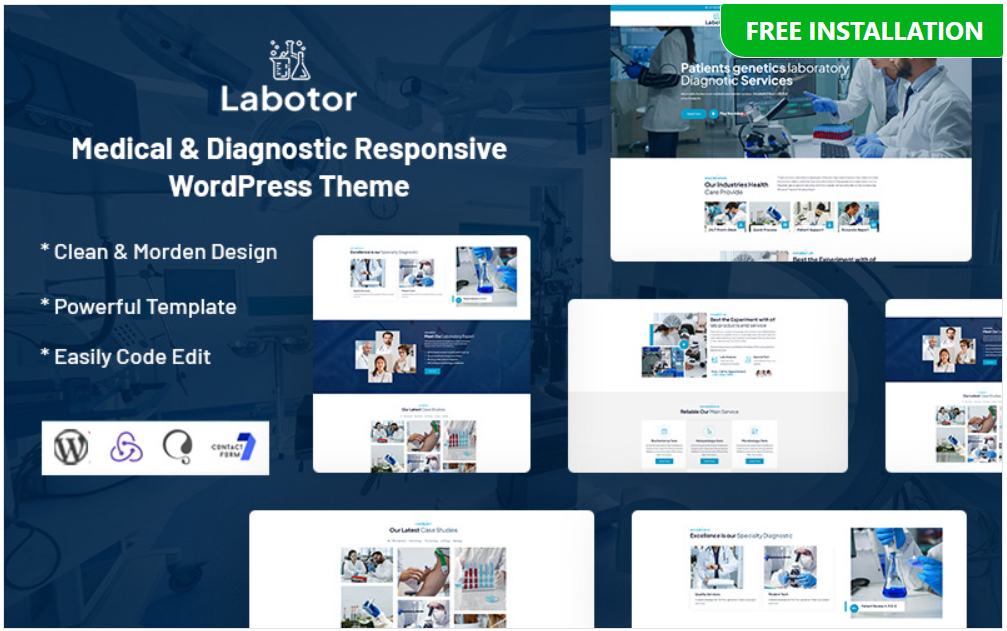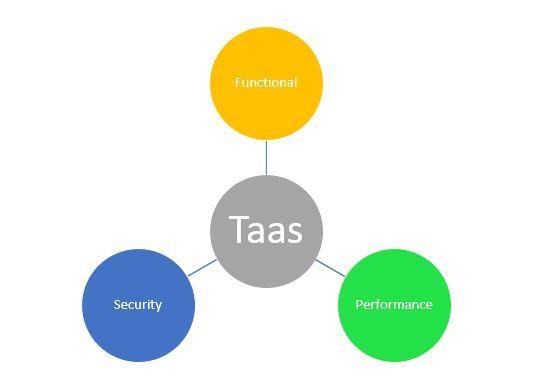Understanding Breast Density and Why It Matters in Breast Cancer Screening

Breast cancer screening saves lives, but the process is not one-size-fits-all. Among the many factors that influence the accuracy of screening, breast density stands out as one of the most important—and least understood—by the general public. Breast density is not about size or firmness, but rather the proportion of fibrous and glandular tissue compared to fatty tissue in the breast. This distinction matters greatly because dense breast tissue can both increase the risk of cancer and make tumors more difficult to detect.
For medical practices and diagnostic centers, delivering clear, accessible patient education on breast density is just as important as providing state-of-the-art imaging. A modern, well-designed WordPress Theme for Diagnostic laboratory can help healthcare providers share critical information, display screening options, and guide patients toward early detection services in a user-friendly way. When patients understand what breast density means, they are better equipped to make informed decisions about their screening choices.
The Hidden Challenge: What Breast Density Really Means
Many women are surprised to learn that breast density is a measure of tissue composition—not appearance or texture. Breasts are made up of:
-
Fibrous tissue (supports the breast structure)
-
Glandular tissue (produces and transports milk)
-
Fatty tissue (provides cushioning and shape)
Dense breasts have a higher proportion of fibrous and glandular tissue compared to fat. On a mammogram, dense tissue appears white, the same color as potential tumors. This similarity can obscure early-stage cancers, making them harder to detect.
Studies show that nearly 40–50% of women aged 40 and over have dense breast tissue. That means almost half of the screening population faces this unique challenge.
Why Breast Density Matters for Cancer Risk
Breast density affects more than just image clarity—it also influences risk. Women with dense breasts are four to six times more likely to develop breast cancer than those with mostly fatty breasts. While the exact reason is not fully understood, researchers believe it may be related to:
-
Increased epithelial and stromal cells in dense tissue, which are more prone to abnormal growth
-
Hormonal influences that may stimulate both tissue density and cancer development
-
Delayed diagnosis due to detection difficulties, leading to more advanced disease at discovery
This combination of higher risk and harder detection makes breast density a double challenge in screening.
How Breast Density is Measured
Breast density is typically classified into four categories based on the American College of Radiology’s BI-RADS (Breast Imaging-Reporting and Data System) scale:
-
Almost entirely fatty – The breasts are mostly fatty tissue, making abnormalities easier to detect.
-
Scattered areas of fibroglandular density – Some dense areas, but most of the tissue is fatty.
-
Heterogeneously dense – Many areas of dense tissue, which can obscure small masses.
-
Extremely dense – Most tissue is dense, greatly reducing mammogram sensitivity.
These categories are determined by a radiologist reviewing mammogram images, though new automated software tools can help standardize reporting.
The Emotional Weight of Dense Breast Notifications
In many regions, laws require that women be informed if they have dense breasts. While this transparency is important, the notification often arrives with little explanation or guidance. Patients may feel:
-
Confused about what density means
-
Anxious about increased cancer risk
-
Frustrated that their mammogram may not be enough
-
Overwhelmed by the choices for additional screening
This emotional layer can lead to delays in follow-up imaging or avoidance of screening altogether.
The Limitations of Mammography for Dense Breasts
Traditional 2D mammography is less effective in detecting cancer in dense breast tissue. Dense tissue and tumors both appear white, making it like “finding a snowball in a snowstorm.”
In fact, mammograms can miss up to 50% of cancers in extremely dense breasts. This is not due to negligence but to the physical limitations of the technology when dense tissue is present.
Advanced Imaging Options for Women with Dense Breasts
While mammography remains the gold standard for breast cancer screening, women with dense breasts may benefit from additional imaging. These include:
1. Digital Breast Tomosynthesis (3D Mammography)
This technology takes multiple X-ray images from different angles, creating a layered view of the breast and improving visibility in dense tissue.
2. Breast Ultrasound
Ultrasound uses sound waves to detect masses that may not be visible on mammograms. It’s especially useful for differentiating between solid and fluid-filled lumps.
3. Breast MRI
MRI uses magnetic fields to produce highly detailed images and is particularly valuable for high-risk patients. It can detect cancers missed by both mammography and ultrasound.
4. Contrast-Enhanced Mammography
This newer technique combines traditional mammography with a contrast agent to highlight areas of increased blood flow, which can indicate cancer.
Choosing the Right Screening Path
For women with dense breasts, screening decisions should be made collaboratively with a healthcare provider, taking into account:
-
Age and family history
-
Genetic risk factors (e.g., BRCA mutations)
-
Personal comfort with different imaging methods
-
Access to advanced screening technologies
Some women may need annual 3D mammograms plus supplemental ultrasound or MRI. Others may only require additional imaging if abnormalities are suspected.
The Role of Patient Education in Better Outcomes
When patients understand what breast density means and how it affects screening, they’re more likely to follow through with the appropriate imaging. This is where healthcare communication—both in person and online—becomes critical.
Educational initiatives should:
-
Explain density in simple terms
-
Provide visual examples of dense vs. fatty breast tissue
-
Outline available screening options
-
Offer clear next steps if density is detected
Technology’s Role in Breast Density Awareness
Digital tools have made it easier than ever to provide tailored information to patients. Patient portals, telehealth consultations, and interactive screening guides can personalize recommendations based on density level.
Artificial intelligence in mammography is also showing promise in improving accuracy by highlighting suspicious areas that might be missed by the human eye in dense tissue.
Breaking Down Barriers to Access
One major challenge for women with dense breasts is the cost and availability of supplemental screening. Not all insurance plans cover additional imaging, and not all facilities offer advanced technologies like 3D mammography or breast MRI.
Healthcare advocacy groups are pushing for broader insurance coverage and greater access to advanced imaging—especially in rural or underserved areas.
The Global Perspective on Breast Density Screening
While breast density is a universal factor, screening recommendations vary by country. For example:
-
United States: Many states mandate patient notification and recommend supplemental screening.
-
Australia: No mandatory notification laws yet, but breast density is increasingly discussed in guidelines.
-
European countries: Approaches vary widely; some offer MRI for high-risk women regardless of density.
Understanding local regulations and guidelines helps both providers and patients make informed choices.
Looking Ahead: The Future of Breast Density Research
Ongoing studies are investigating:
-
The biology of dense tissue to understand why it increases cancer risk
-
Personalized screening schedules based on density and genetic risk
-
AI-powered diagnostic tools to improve detection rates
Researchers are also exploring whether lifestyle factors—such as diet, exercise, and hormone therapy—can influence breast density over time.
Final Thoughts
Breast density is more than a radiology term—it’s a significant factor in both the risk and detection of breast cancer. Understanding your breast density can help you and your healthcare provider make more informed screening decisions, leading to earlier detection and better outcomes.
For women with dense breasts, awareness is the first step, but action is the most important. Talk to your doctor, know your options, and ensure your screening plan fits your personal risk profile. With the right combination of education, technology, and access to advanced imaging, we can bridge the gap between detection and diagnosis, no matter how dense the challenge.







